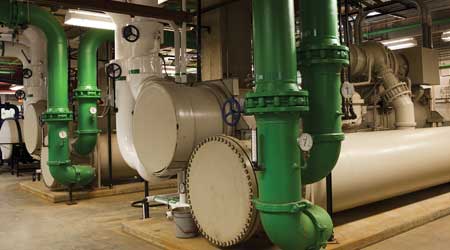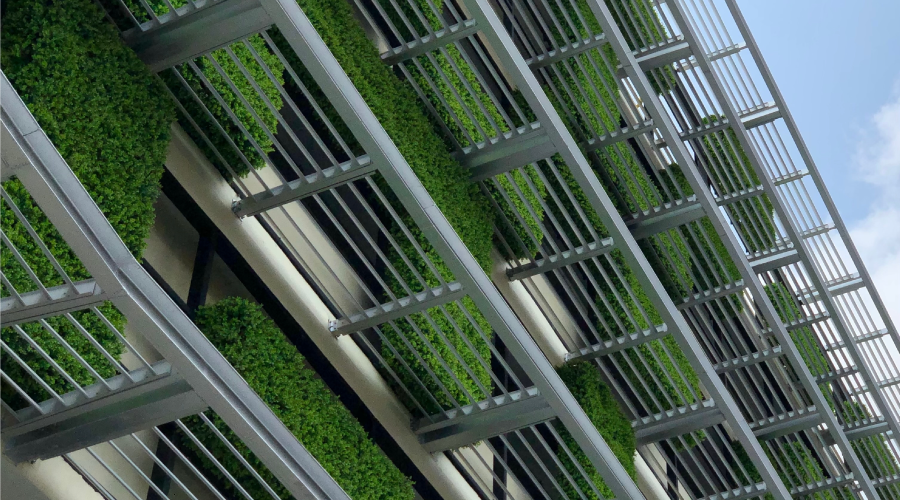4 Questions to Ask to Help Select Smart Building Technologies
Whether for HVAC, lighting, or BAS, smart options abound these days. Here's how to narrow down your choices to makes sure you get what you need.
It seems that every week brings the release of a new smart device or system for buildings. Often, the benefit of the new technology is related to energy in order to reduce consumption, trim demand, or cut carbon emissions. Since HVAC and lighting systems are the biggest energy users in buildings, it’s no surprise that there is a wealth of smart technology promising gains in energy performance.
The wide range of choices is both an opportunity and a challenge. With so many options on the market, you have a good shot at finding a product to address a specific need. In fact, there may well be a range of choices available, some targeted to a specific application, others with a more extensive set of features. That breadth of offerings is where the challenge comes in, especially because products may differ, not only in terms of features, but also on points like how they communicate, the extent to which they enable interoperability, and the cybersecurity methods they employ.
In the face of so many options, narrowing the choices is an important first step. Focusing on four points may help.
1. Why do you need it?
Begin with the end in mind. “Before you pick a solution, identify your objectives and the desired outcomes,” says Mo Fahim, practice leader, intelligent building technologies, Environmental Systems Design. “What are the use cases that you want to solve for? You don’t want a solution in search of a problem.”
If the goal is to improve energy performance, for example, can you identify specific opportunities to use smart technology to achieve that objective? That might mean addressing demand charges or optimizing HVAC schedules based on occupancy, notes Joe Aamidor, managing director of Aamidor Consulting. Focusing on an existing pain point provides a goal for the smart technology project. It offers criteria for evaluating smart products and provides a way to judge the outcome of the project. “Understand the problem you’re trying to solve,” says Aamidor.
2. Who will benefit?
Smart technology should ultimately make life easier for people, whether the people in question are occupants, facility operating staff, facility management leadership, or senior executives. Each group has its own needs and how well the smart technology meets those demands may determine whether the project is a success. If the goal is to retain employees, smart technology might offer a way to improve occupant experience, perhaps by making it easier to schedule conference rooms. By contrast, the operations team would be more interested in tools that can detect problems before they occur. Keeping people’s needs front and center can help you focus on the must-have features when smart options are being considered. That’s especially important given that some smart devices and systems offer a wide range of functions while others have a narrow feature set.
Considerations regarding people come into play in other ways as well. The facility staff must be able to operate a new system and in some cases to respond to warnings and alerts. Training may be required to maximize the benefits of the new technology; so may a change management strategy if the new tool will require new processes or work patterns.
Contractors are another category of people who can influence the success of a smart technology project. “A system could be designed to provide all the features and functions that facility management is looking for, but the contractor who has to install it may not be able to deliver all that,” says Christina Halfpenny, executive director of the DesignLights Consortium. That’s why it’s important to understand the installation process, to work with contractors to make sure they understand what the system is supposed to do, and to choose contractors who have the right experience and knowledge to handle system installation and integration.
Last but not least, don’t forget to involve IT at the start of any smart technology project. Their expertise is essential to address issues like use of the network, communications technology, and of course cybersecurity.
3. What will it do?
This is where smart product evaluation gets interesting. The choices range from software tools like automated fault detection and diagnostics, to smart pieces of equipment like valves and actuators, to entire systems. Although the range of options can be daunting, it’s worthwhile to understand common benefits. Heading the list are ways to save energy. One approach is using occupancy data to automatically change HVAC set points. “The big energy savings is optimizing schedules,” Aamidor says. “If a space is unoccupied, there is an opportunity to raise the temperature in summer or lower it in winter.”
Another strategy is using weather data to optimize heating and cooling schedules. “If it’s going to be really hot at 2 p.m., maybe you can reduce that demand by cooling early,” Aamidor says. “That can avoid demand charges.”
Identifying equipment problems is another category of benefits. Automated fault detection and diagnostics tools run data from the building automation system through sophisticated analytics to spot problems, typically ones in HVAC systems, and then let the operations team know what problems are found. Predictive tools go a step beyond fault detection and diagnostics, says Dan McJacobson, senior energy engineer with McGuire Engineers. If a component is performing less well than it used to, predictive tools provide advance warning rather than simply reporting a failure, as a traditional BAS would do. “The alarm says you’re now at risk for failure with this component rather than telling you that you have no heat,” McJacobson says.
Other sets of benefits revolve around the availability and use of data. For example, with information on HVAC system run time, facility staff can see when filters need to be changed, rather than relying on a predetermined schedule, Aamidor says. And he notes that better data on how a system is operating might enable the facility team to reduce hot or cold calls by starting to heat or cool the building sooner.
The emerging concept of a smart building platform presents even more opportunities. “It’s beyond just smart components,” Fahim says. “It’s a platform that connects the devices and systems to enable more use cases.”
A smart platform could take numbers from inventory, combine them with run-time data from the BAS, and automatically order filters when they were needed. If systems were tied together, alerts from the fault detection and diagnostics tool could auto-generate service requests. If the HVAC system were tied into the enterprise resource planning and room booking systems, a conference room could be cooled based on how many people accepted a meeting invitation and how many of them would be remote.
“It’s about being preventive, predictive, prescriptive,” Fahim says.
4. When to deploy it?
It’s worthwhile to look to the future when an investment in smart technology is being considered. Lighting controls offer a good example of why that’s true.
LED fixtures with integrated sensors offer many useful capabilities. These smart fixtures can provide a wealth of occupancy data that may aid in a range of areas, including heat mapping, space optimization, temperature and humidity sensing, wayfinding, and customer engagement. But standalone fixtures lack a capability that you may very well want in the future: networking. A digitally networked lighting system can combine occupancy data with test tuning, daylight harvesting, remote diagnostics, individualized controls, even potentially scheduling software.
“Ideally you have smart lighting and HVAC systems connected so data points from the lighting system can create positive actionable outcomes,” Fahim says.
A lighting system can always be retrofitted in the future to integrate the stand-alone smart fixtures. But that’s a more costly strategy than investing in a networked system at the outset, Halfpenny says. What’s more, because of the very long useful life of LEDs, it will probably be a long time before the fixtures need to be replaced and a new opportunity arises to install a digitally networked lighting control system.
“If we can get a networked system in now, we can reprogram the software in the future any time there’s a retrofit or a change in the building, without changing the hardware,” says Halfpenny.
It’s worth remembering that building systems have become progressively smarter, and that trend is likely to continue. “There is an increasing level of smarts that just makes it into the equipment,” Aamidor says. Five years from now, the most advanced features available today may well be standard.
One example: Predictive analytics are available not only in packaged systems like rooftop units, but also in some smaller devices like control valves, which can be connected to cloud-based analytics as well as the BAS, McJacobson says. And instead of analytics packages that sit on top of the BAS, manufacturers are increasingly offering smart devices with analytics built-in, moving intelligence to the edge.
“I think it’s going to fall to facility managers to manage all the systems,” Halfpenny says. “It’s really in their best interest to ask for as much integration as possible.”
Email comments and questions to edward.sullivan@tradepress.com.
Related Topics:














